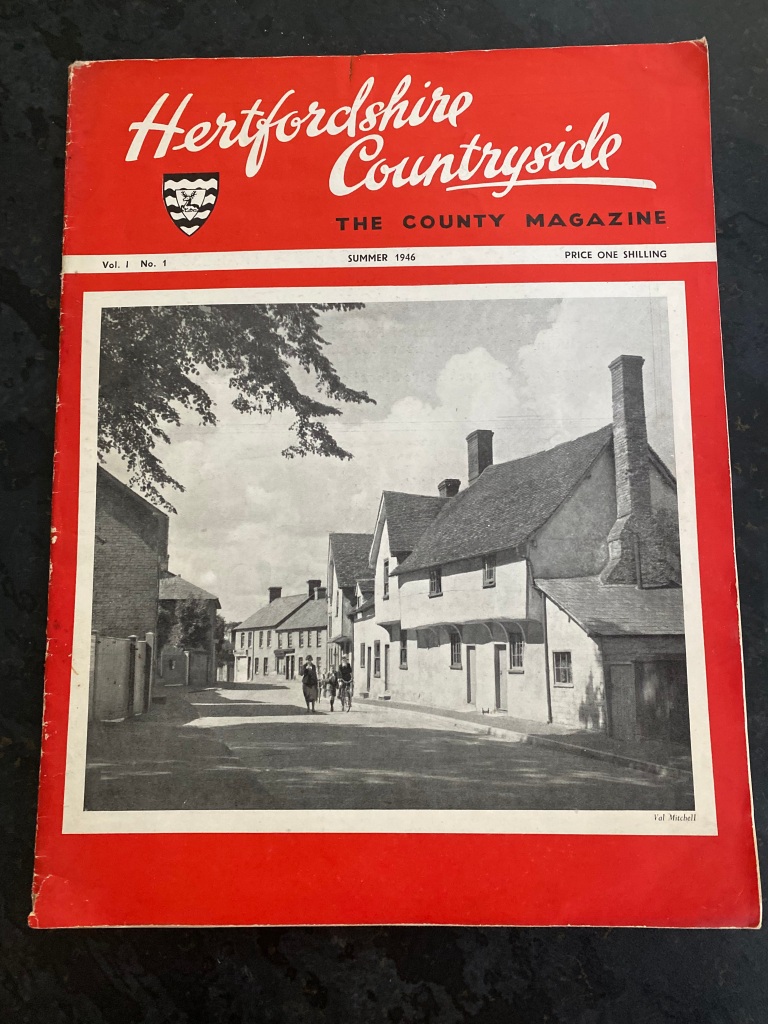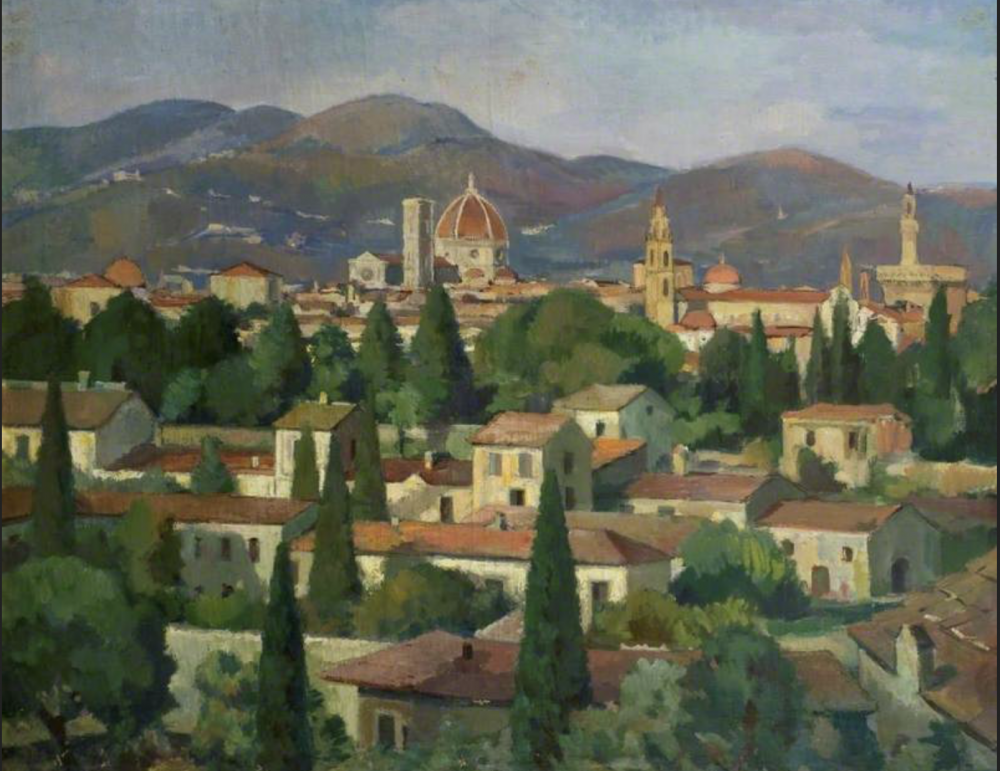I’m indebted to Gerard Watts (see these posts) for sharing with me a collection of documents relating to Theodor Kern that belonged to his late mother. As I’ve noted before, Jean Watts was a member, and for a time the chairwoman of Hitchin Art Club, for which Kern often acted as a mentor and competition judge, and she also compiled the official history of the club. In addition, Mrs Watts was a fellow parishioner with Theodor and Frieda Kern at the church of Our Lady Immaculate and St Andrew in Hitchin, and a close friend of the couple, as demonstrated by the fact that Frieda left a number of items to members of the Watts family in her will.


There is an abundance of fascinating material in the collection, and it will certainly provide me with material for a number of future posts. In this post I’ll begin with an article published in the first ever issue of Hertfordshire Countryside magazine in the summer of 1946. This anonymous piece would be referred to by Jean Watts in her own article about Theodor Kern, published in the same magazine two decades later, in July 1967, which I wrote about here.

The 1946 article is of interest for a number of reasons. Firstly, having made reference to the sculpture of the Madonna and Child for All Hallows School in Somerset, which I wrote about in this post, it also mentions the March 1946 exhibition at the Arts and Crafts Exhibition Society at Burlington House which I wrote about here. However, by contrast with the records that I’ve managed to find online, which suggest that Kern’s only contribution to the latter exhibition was a wooden ‘head of a girl’ (which I believe is one of the carvings now owned by Gerard Watts: see this post), the magazine article states that the artist also exhibited a second statue of the Madonna and Child, together with ‘examples of…outstanding stained glass designs’. It would be good to find a reliable catalogue of the exhibition, so as to be able to confirm which items Kern actually contributed.
Secondly, the article throws further light on Theodor Kern’s wartime voluntary work with wounded and traumatised soldiers at various hospitals in Hertfordshire, which I believe explains how he came to live in the county in the first place. Listed here are the Lister Hospital (which is more accurately in Stevenage, not Hitchin), Fairfield Hospital in Letchworth, and the St Paul’s Walden Bury and Hertford Convalescent Home, where, as described here, ‘for five years he…helped ex-Service patients, who were often deeply depressed, by creating in them an interest in drawing and art’. The reference to mental illness reminds me that, according to Fr Andrew O’Dell, the former parish priest at Our Lady’s church, Frieda Kern told him that Theodor also worked for a time at the mental hospital – or ‘asylum’, as it was then known – at Arlesey, near Hitchin. I wonder if Kern ever managed to put on the exhibition of patients’ drawings that’s mentioned here?
Thirdly, the article is illustrated by four reproductions of works by Kern. Two of these – part of a mural from the parish church in ‘Schallerdorf’, Austria (a misspelling of Schalladorf, a town about 40 miles north of Vienna) and the stained glass ‘mosaic’ of the Madonna and Child – were new to me, though the mural, which was executed in 1928, is mentioned in passing in Ernst Ziegeleder’s brief biography of Kern. The other two pictures, a charcoal drawing of Cardinal Hinsley, Archbishop of Westminster, and a pastel portrait of Walburga Breitenfeld, daughter of Kern’s friends and fellow Austrian exiles Walter and Johanna Breitenfeld (see these posts), were already familiar, since Walburga (now Mrs. Walburga Shearer) sent me reproductions of them from an old exhibition catalogue some time ago. The caption in the article describes the portrait of Walburga as ‘recent’, confirming that it was created after both Kern and the Breitenfelds left Austria. The description of its subject as ‘a Yugoslav girl’ may confuse: Walburga’s father Walter, an academic, was Austrian and the family lived in Vienna; however, her mother, Johanna, was a member of an aristocratic Austro-Hungarian family, born in what is now Slovakia. The family certainly owned property in what became Yugoslavia, and is now Serbia: indeed, it was to their estate at Futog, near Novi Sad, that the Breitenfelds initially fled after Walter’s opposition to Nazism made their continued residence in Austria untenable. In fact, as Walburga explained to me, Theodor Kern accompanied Walter Breitenfeld on the train journey to Futog, before he himself travelled onward, first to the Hildebrand villa in Florence, then to spend some time with the family of Hildebrand’s colleague Balduin Schwarz in Switzerland, before finally moving on to London.
